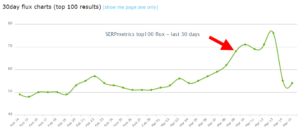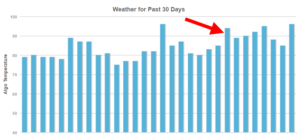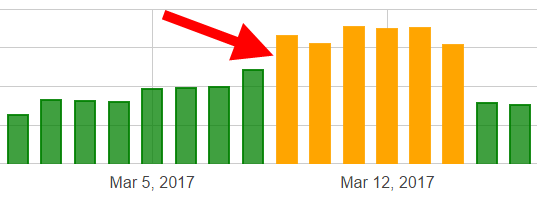The “Fred” Google Algorithm Update Explained

What is the “Fred” Google Update Anyways?
There has been a ton of movement within Google SERPs (Search Engine Result Pages) lately. We have seen dramatic ranking changes that are practically reversed, seemingly overnight, with little to no information or confirmation coming from Google themselves. That doesn’t deter Search enthusiast and experts from constantly asking Google employees. Hence the “Fred” Google algorithm is born.
Confused?
Let’s dive a bit deeper to before the “Fred” update was announced.
It all began around March 8, with the rumblings of massive SERP fluctuations. This was confirmed by various tools and ranking trackers on March 9, with large spikes in general ranking movement. Below you can see (in order) SERP Metrics, Mozcast, and Algaroo. These sites show the spikes in varying ways simply because they all track and report SERP changes differently. The core thing to note is that they all saw some sort of change, at least to some degree.



Seeing these spikes started some banter between Barry Schwartz and Google’s Gary Illyes regarding confirmation and a name for the update. This was countered with Gary stating that, “Google on, on average, makes 3 updates,” (presumably to the algorithm).
Finally, after some persistence, Gary confirmed that, “Every update unless otherwise stated, shall be called Fred.”
Thus the “Fred” update is born. At the time of the naming not much was known outside of extreme drops/gains, and it seemed to be associated with sites with poor links.

Fast forwarding to today, we have much more information, and a few experts within the SEO industry believe they have narrowed what the updated algorithm targets. The general consensus is that it targets predominantly ad-heavy, low-value content sites. That is to say, sites that have little content or reason for existing other than generating revenue for the site owner. There is also speculation around it hitting sites with terrible link profiles, which would correlate with the sites outlined above.
What we saw, impact wise, was minimal, which further confirms the hypothesis informational/national type sites vs local SMB type sites.

Did you see any changes or impacts? Have you seen any changes with your clients? Let me know in the comments below!
